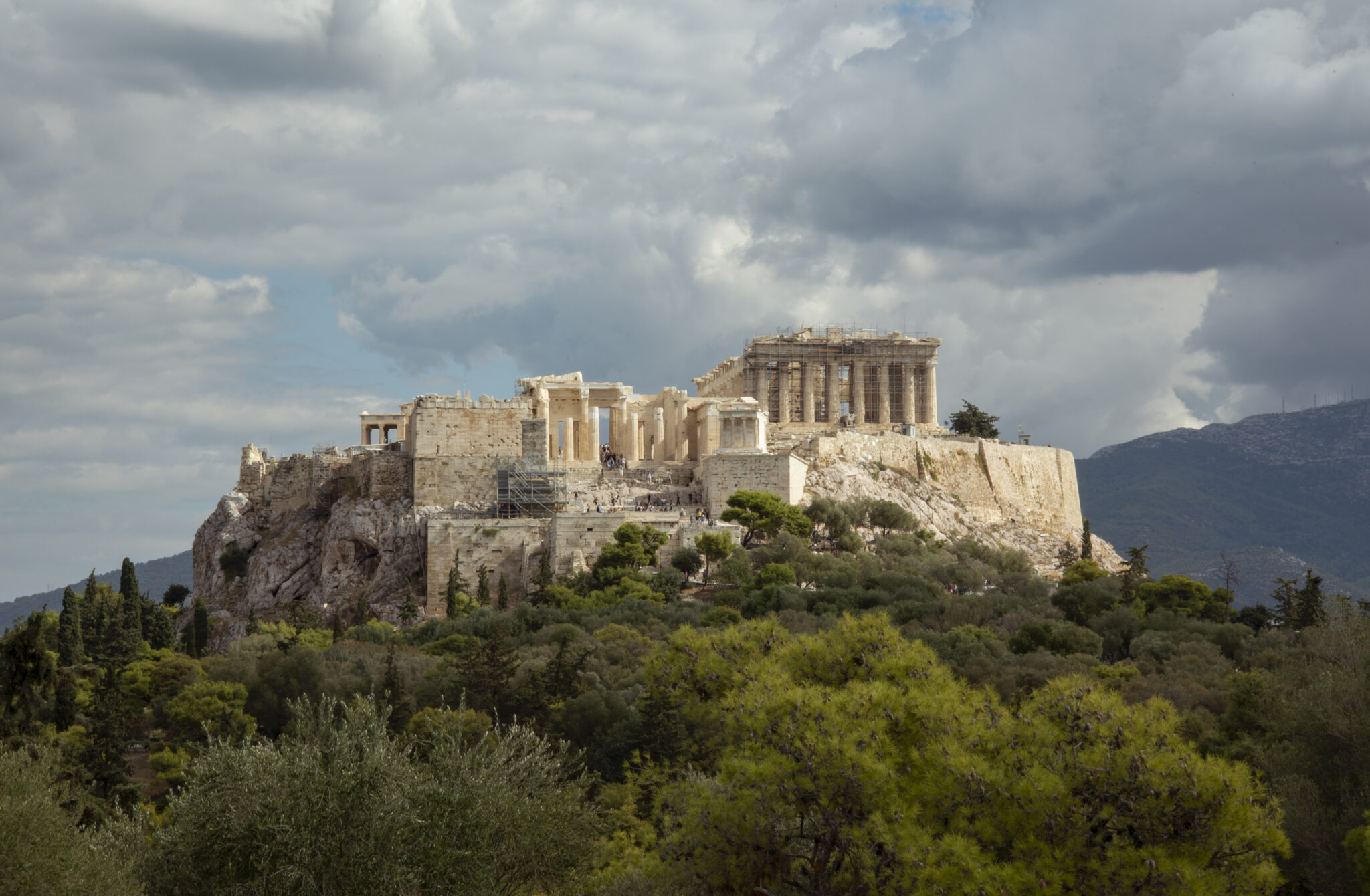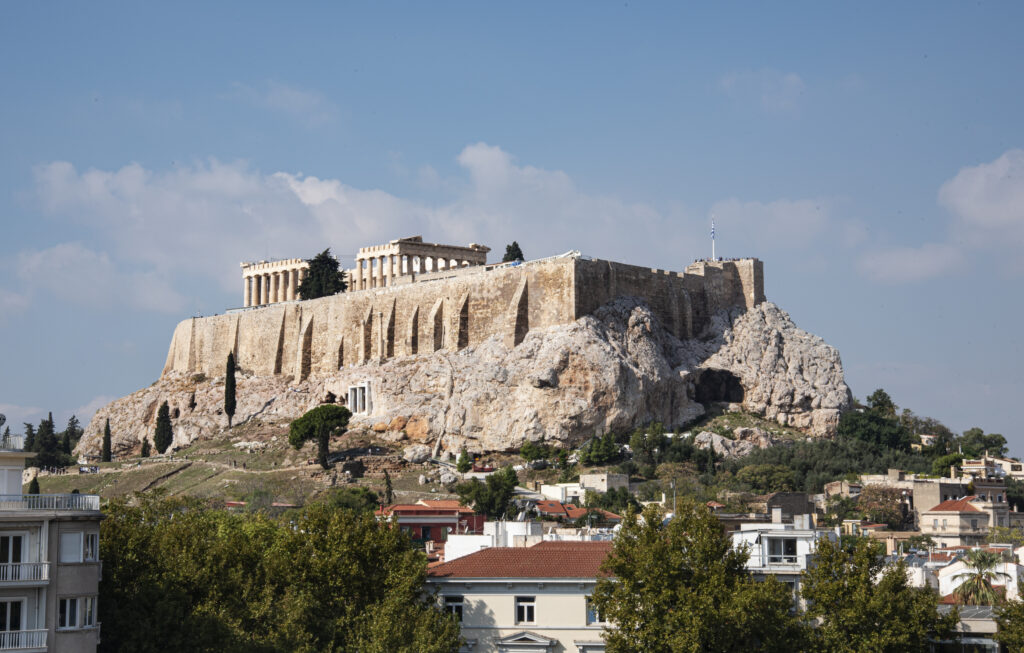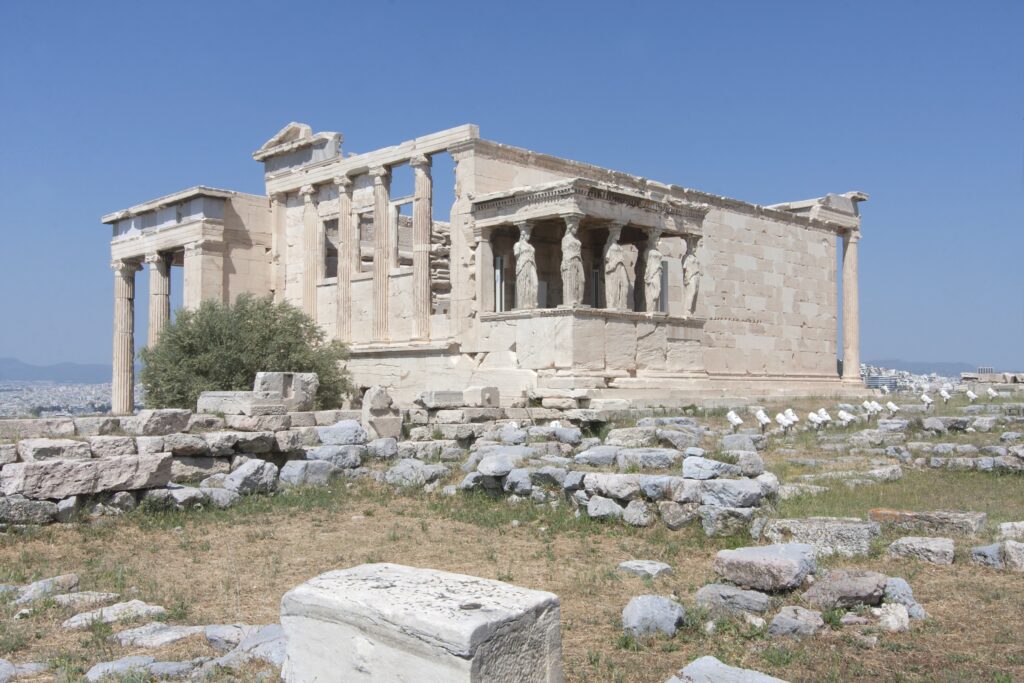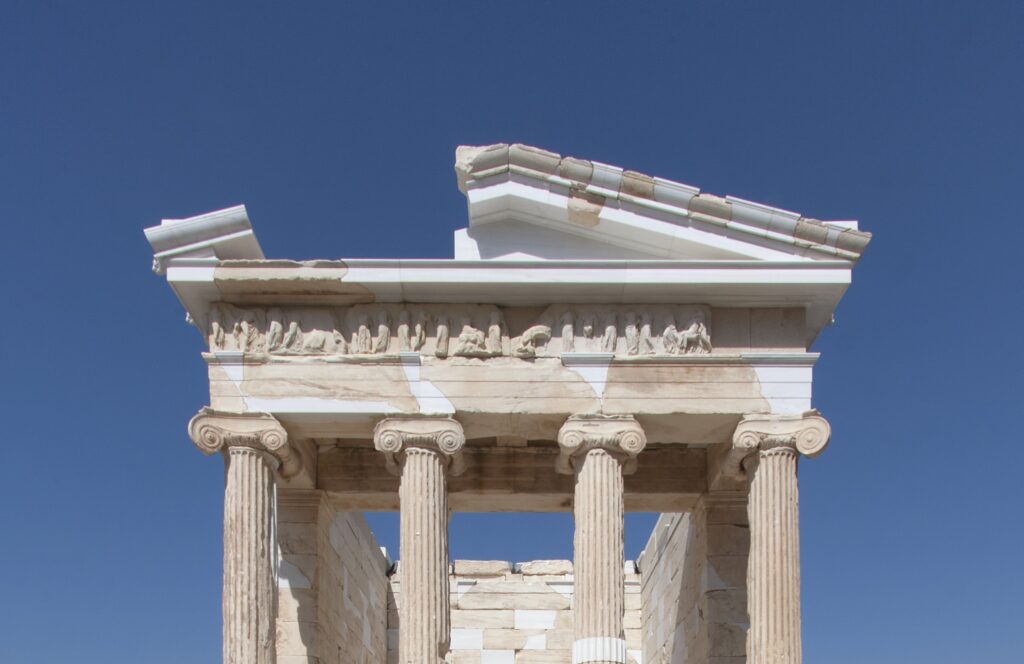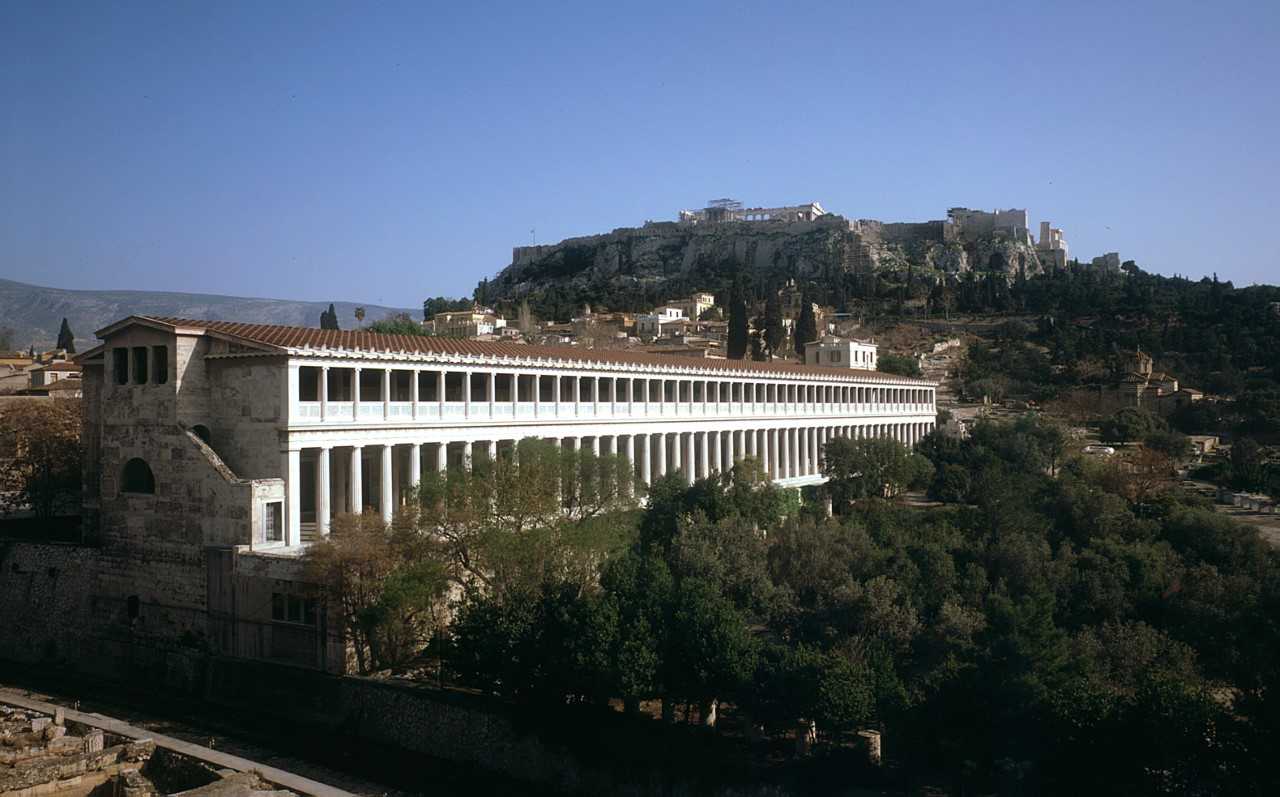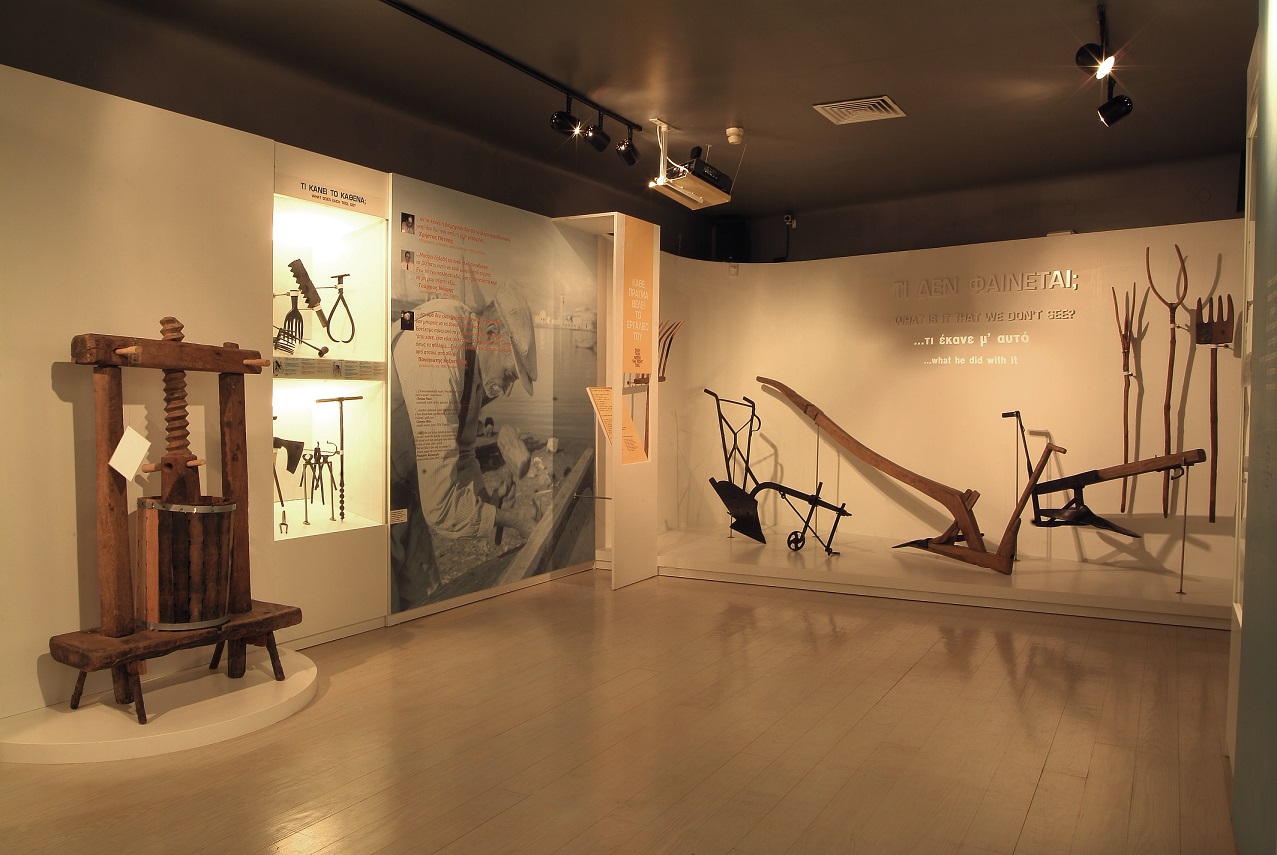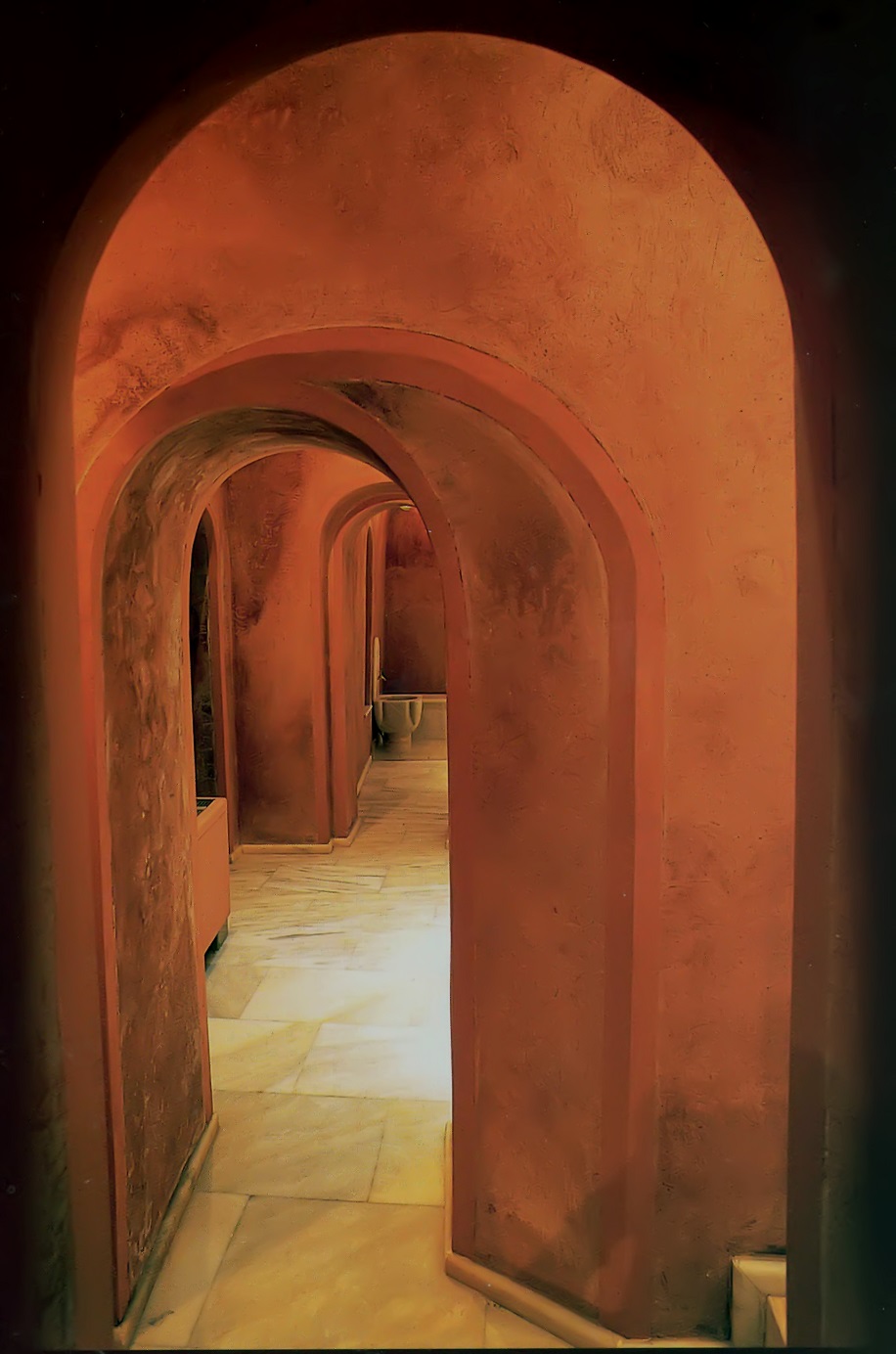Built on a rocky hill, 156 meters above sea level, the Parthenon was the focal point of religious life on the Acropolis.
Steep and inaccessible from every side except the west, the hill had been inhabited since the 3rd millennium BC, not only because of its natural fortification but also due to the spring water flowing from its slopes. During the Mycenaean period, the settlement grew, and the Acropolis became a center of power. By the 8th century BC, it had taken on an exclusively sacred character, with the establishment of the cult of Athena Polias.
In the mid-6th century BC, the tyrant Peisistratos – who rose to power three separate times through various stratagems – built a predecessor of the Parthenon, known as the Hekatompedon. After their victory over the Persians at Marathon in 490 BC, the Athenians began constructing a much larger temple, known as the Pre-Parthenon. Their efforts were in vain, however, as the Persians invaded Attica in 480 BC, plundered the Acropolis, and burned down its monuments.
From the mid-5th century BC onward, everything changed. Pericles, a charismatic leader with progressive ideas, launched an ambitious building program that lasted throughout the second half of the century and gave us all the monuments we know today: the Parthenon, the Propylaea, the Erechtheion, and the Temple of Athena Nike. Pericles aimed not only to protect and glorify the city but also to create jobs, primarily for the citizens of Athens. Countless people – Athenians and foreigners, free and enslaved – worked on realizing his vision, earning a daily wage of one drachma.
The Parthenon, the ultimate architectural expression of the ancient Greek spirit, was designed by Iktinos in collaboration with Callicrates, while Phidias, a sculptor and close friend of Pericles, was responsible for the sculptural decoration. The inspired proportions, innovative architectural elements, and intricate reliefs were harmoniously combined into a unique monument that embodied the history of an entire nation, from the Olympian gods to Democracy. Inside the temple was housed the colossal chryselephantine statue of Athena, which was lost to the depths of history, along with the ancient worship.
The famous porch of the Maidens, later known as the Caryatids, is part of the Erechtheion, where the Panathenaic procession concluded—a splendid festival that rivaled the Olympic Games in popularity. One of the Maidens, along with half of the surviving sculptural decoration of the Parthenon, was looted by Lord Elgin and ended up at the bottom of the sea before reaching its final destination: the British Museum in London.
Today, the monuments of the Sacred Rock of the Acropolis symbolize the people who built them more than the gods to whom they were dedicated. Above all, however, they remind the rest of the world that Greece was, is, and will always be the cradle of democracy.
Directions
Athens Acropolis
10558, Athens
12 minutes from the “Acropolis” Metro Station
Line 2, exit at “Acropolis” station
Lines 1 & 3, exit at “Monastiraki” station
Line 230, get off at “Acropolis” bus stop
10 mins from Syntagma Square
Opening hours
April 1 – August 31
Daily: 08:00 – 20:00
September 1 – 15
Daily: 08:00 – 19:30
September 16 – 30
Daily: 08:00 – 19:00
October 1 – 15
Daily: 08:00 – 18:30
October 16 – 31
Daily: 08:00 – 18:00
November 1 – March 31
Daily: 08:00 – 17:00
The site remains closed on the following dates and public holidays:
January 1, March 25, May 1, Easter Sunday, December 25 & 26.
Tickets
Full: €30.00
Reduced: €15.00

Shop
Visit the Hellenic Heritage Museum Shop at the archaeological site of the Acropolis and discover a wide selection of decorative objects, jewelry, books and souvenirs inspired by the Parthenon, the Caryatids, as well as other landmark monuments of Athens. In addition, you will find exact copies of unique artifacts from our museums, certified by the Ministry of Culture. Each piece promises to bring a fragment of the history and timeless magic of the Acropolis into your home.
Amenities
Accessibility
An elevator for people with mobility impairments, is available on the north side of the Acropolis, at a distance of about 300 m from the exit of the archaeological site. It can be used by people with diminished abilities, and any parent attending two or more infants on her/his own.
The elevator arrives on the Acropolis plateau, to the area north of the Erechtheion. Consequently, visitors can either follow the route towards the Propylaea or the route between the Parthenon and the Erechtheion. At the final part of the second route, visitors with mobility impairments can use an adequate restroom.
The North Slope of the Acropolis is wheelchair accessible (the help of an attendant is advisable), through the specially designed entrance-exit for people with disabilities, which is located north of the main entrance of the Archaeological Site of the Acropolis, on the West Slope. Visitors with mobility impairments can follow the route of the Peripatos to the east, up to the guardhouse in the area of Anaphiotika.
The South Slope of the Acropolis is wheelchair accessible (the help of an attendant is advisable), via the main entrance, at the junction of Dionysiou Areopagitou & Thrasyllou streets. Visitors follow the course leading to the West passageway (parodos) of the Theatre of Dionysos.
Contact
Guardhouse of the Acropolis Archaeological Site
T: +30 210 9238747, +30 210 3214172
Ephorate of Antiquities of the City of Athens
T: +30 210 9238724, +30 210 9238747
E: efaath@culture.gr
Hellenic Heritage Museum Shop
Τ: +30 210 3222816


